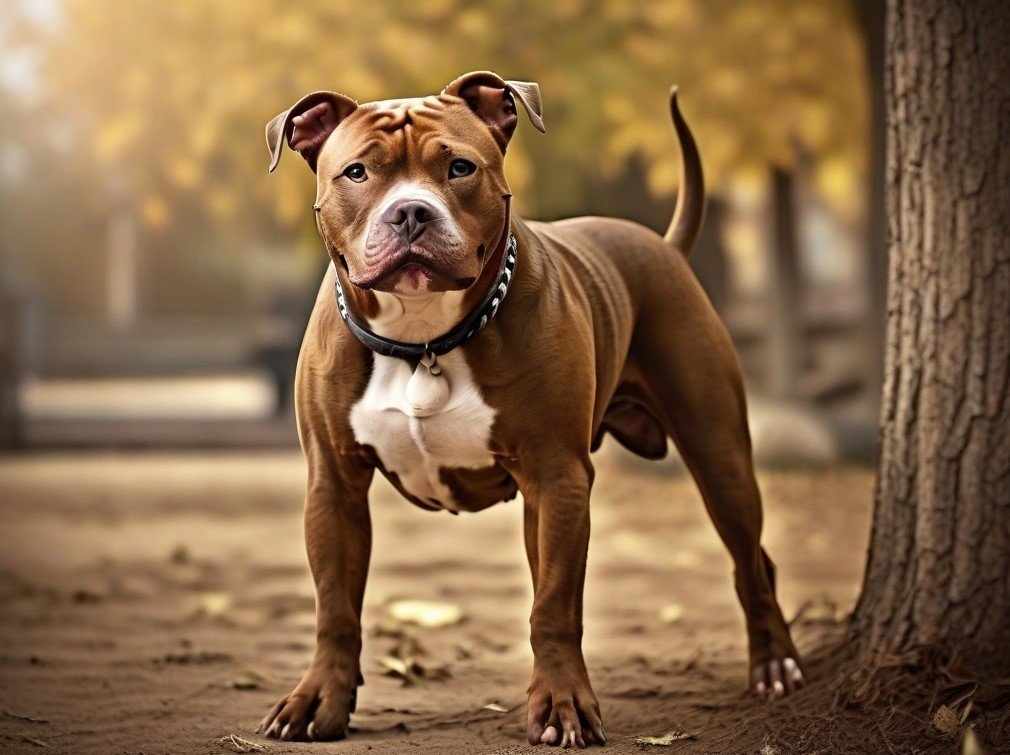Thinking about bringing your furry companion Down Under? It’s important to know that Australia has some strict rules about which dog breeds are allowed into the country. This is largely to ensure the safety of both people and other animals. As a result, five particular dog breeds face bans throughout the country because of their potential risks.
While enjoying Australia’s breathtaking scenery and friendly atmosphere, it’s essential to keep these regulations in mind. This blog will guide you through the current rules in 2024 regarding dog breeds banned in Australia, including the reasons behind these restrictions and their implications for pet ownership.
What Dogs Are Banned In Australia?
In Australia, certain dog breeds are not allowed due to safety regulations. The American Pit Bull Terrier, Japanese Tosa, Dogo Argentino, Fila Brasileiro, and Perro de Presa Canario are on this list. These breeds cannot be imported, bred, or owned anywhere in the country. Each state and territory has strict rules to enforce these bans. The goal is to reduce the chances of dog-related incidents and to keep everyone safe.
Five Dog Breeds Prohibited in Australia
1. Tosa Inu
The Tosa Inu is a large breed that hails from Japan and was initially bred for dog fighting. Known for its strength and size, the Tosa Inu can be a devoted companion but is also known to be aggressive towards unfamiliar dogs and people. This breed is banned in Australia because of its history as a fighting dog and its potential to cause harm. When this dog becomes aggressive, controlling it can be very challenging due to its significant size.
2. Pit Bull Terrier
Developed in the 19th century, the Pit Bull Terrier was a result of breeding bulldogs with terriers to create dogs for fighting and other violent activities. In most parts of Australia, Pit Bulls are fully banned. The country has prohibited the importation of these dogs for over 15 years. Classified as a “restricted breed,” the regulations are stringent, making ownership, breeding, or importing these dogs nearly impossible.
3. Argentine Mastiff
The Argentine Mastiff, or Dogo Argentino, is a powerful dog bred in Argentina for hunting purposes. Although they are known for their loyalty and protectiveness, they can also show stubborn behaviour. Australia placed restrictions on this breed due to several incidents of attacks on humans and other dogs, some resulting in fatal injuries. As a restricted breed, Dogo Argentinos are only allowed under specific conditions, and they require early training to ensure they grow into well-mannered adults.
4. Brazilian Mastiff
Originating from Brazil, the Brazilian Mastiff, or Fila Brasileiro, is a large breed recognised for its strength and loyalty. Unfortunately, this breed has been banned in Australia and several other countries. The reasons include the breed’s aggressive tendencies and potential for being difficult to manage if aggression arises. The Brazilian Mastiff has been involved in attacks on both people and livestock, prompting the ban on importing, breeding, and owning these dogs in Australia.
5. Canary Mastiff
The Canary Mastiff, or Perro de Presa Canario, comes from the Canary Islands in Spain and was initially bred to protect livestock. Although they are protective and loyal, their strong guarding instincts can make them aggressive if not properly trained or socialised. In Australia, this breed is banned to ensure public safety, as their protective nature can lead them to act aggressively toward strangers and other animals.
Penalties for Having a Restricted Dog Breed in Australia
In Australia, owning a restricted dog breed isn’t illegal, but you need the local council’s approval. Without it, you could face serious consequences. Here’s a list of what might happen if you don’t follow the rules:
- Council Registration: You must register your restricted breed with your local council. Failing to do so could result in fines or even jail time.
- If the Dog Harasses: If your dog charges or causes harm to a person or another animal, you must pay a hefty fine of $44,000.
- Selling or Advertising: It’s illegal to sell or advertise a restricted breed. If caught, you could be fined $16,500.
- Compliance with Requirements: Not meeting the control requirements can also lead to a $16,500 fine.
- Annual Permit: Having a valid yearly permit is crucial. If not, you face a penalty of $6,600.
- Encouraging Attacks: If you are found encouraging your dog to attack, authorities may seize your dog. You could face up to 5 years in prison or a fine up to $77,000.
For detailed penalty information, you should visit your local government’s official website.
Consequences for Breeding Banned Dog Breeds in Australia
Breeding banned dog breeds in Australia is a serious offence. These breeds are seen as high-risk and can add to overpopulation issues. If you’re found breeding a banned breed, even without meaning to, you could face penalties. These include fines up to $16,550 or a prison term of up to six months. The law treats this matter strictly to ensure the safety and well-being of the public and existing pets.
Are Pit Bulls Restricted in Australia?
You might be surprised to learn that Pit Bulls are not completely banned in Australia, but their importation is restricted. In particular, the American Pit Bull Terrier is not allowed to be brought into the country. If you’re thinking of having a Pit Bull, it’s important to know that the rules vary depending on where you live. This means your state or city might have different regulations.
Owning a Pit Bull in Australia requires that the dog be a descendant of Pit Bulls already in the country. This is why you rarely see them as pets. Before you can keep a Pit Bull, you must receive approval from local authorities and meet several regulations.
Here are some of the conditions you need to follow:
- Sterilise your dog.
- Microchip your dog.
- Muzzle your dog in public areas.
- Leash your dog when out in public.
Pit Bulls are restricted in many regions because of their aggressive nature. Although they may act defensively to protect their loved ones, they can sometimes pose a threat to others, including other dogs. There have been significant incidents in Australia involving these dogs, reflecting their strong protective instincts.
When planning a move to Australia, it’s important to be aware of which dog breeds are not permitted. Breeds such as the American Pit Bull Terrier, Japanese Tosa, Dogo Argentino, Fila Brasileiro, and Perro de Presa Canario are not allowed in Australia. These dogs have gained reputations for being aggressive and potentially dangerous.
To ensure your relocation goes smoothly, research is key. Choose a breed that suits your lifestyle and level of experience. Think about factors such as the dog’s temperament, size, and your living conditions. This will help you find a perfect match for your household.
If you’re uncertain about whether your furry friend is one of the banned breeds, getting in touch with a pet relocation expert can provide guidance. Responsive and understanding support can be crucial in making sure your dog can accompany you on your journey.

